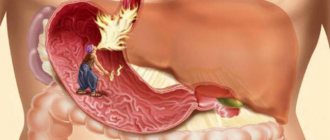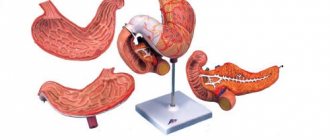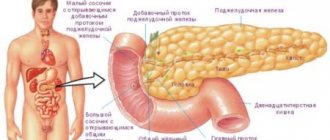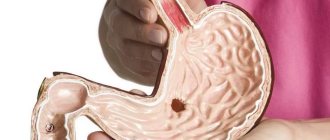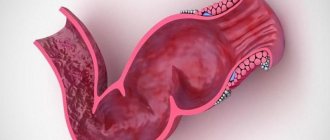In a healthy person, the tongue is pink in color with a slight whitish coating formed due to physiological processes in the oral cavity. Normally, a white coating on the tongue appears at night, is easily removed when performing morning hygiene procedures and does not form again during the day. But in some diseases, the tongue may become covered with a denser white layer, which cannot be removed, has an unpleasant odor and, by its origin, is one of the symptoms of the underlying pathology.
What does white coating on the tongue mean?
A thick white coating on the tongue is the most common and indicates that not everything is in order with the immune system, it has clearly weakened, and an infection has joined in, which can give rise to the development of the disease. Daily cleaning of the tongue and removal of a thin white coating is considered the norm. But as soon as its thickness increases, which is difficult to remove or cannot be removed at all, you need to be wary and monitor your well-being.
Consulting a doctor is the most ideal option. The doctor may prescribe vitamins or dietary supplements that strengthen the immune system. And if an unpleasant odor, ulcers, cheesy formations in the mouth, or microcracks appear, the therapist will prescribe additional diagnostics and determine an accurate diagnosis.
The tongue is an organ and mirror of the gastrointestinal tract. For smokers, the respiratory system sounds the alarm when a white coating appears on the tip of the tongue. The root is covered - problems with the kidneys. Sore throat is always accompanied by a white coating. The appearance of ulcers on the side of the tongue may be a harbinger of syphilis. Thrush in the mouth appears from the growth of a fungus. So the nature of the white coating on the tongue can tell you a lot.
The oral cavity should be regularly cleaned and rinsed with various infusions.
Causes
The reasons for the appearance of white plaque on the tongue are varied:
- Acute and chronic lesions of the tongue itself: inflammation, infections, exposure to medications
- Lesions of the tongue in various diseases - infectious, internal organs, hypovitaminosis, dysbacteriosis, oncology and others
- Not associated with diseases: poor hygiene, eating white foods, alcohol, smoking, unsuitable toothpaste and mouthwash.
Often, a white coating on the tongue is a signal of gastrointestinal diseases, a consequence of eating white and sweet foods, poor oral hygiene or, conversely, using inappropriate hygiene products, smoking, drinking alcohol and thrush. Scientists have proven that even hormonal changes such as menopause lead to a coated tongue, dryness and burning (see symptoms of menopause in women).
Gastrointestinal diseases | |
| Acute gastritis | the tongue is covered with a thick white-gray coating, the side surfaces and tip are clean, dryness is a concern. At the same time, stomach pain, nausea, and other dyspeptic symptoms are noted. |
| Chronic gastritis | on the tongue there is a coating of white-yellow, as well as white-gray color, enlarged papillae are visible, like small spots. I'm worried about heaviness in the stomach and belching. (see treatment of gastritis at home) |
| Peptic ulcer | This disease can be suspected if a plaque appears on the root of the tongue, tightly attached, and white-gray in color. If you have a stomach ulcer, you are worried about plaque and burning, hunger pains that stop with eating |
| Acute pancreatitis | there is a yellow-white coating on the tongue, severe dryness in the mouth, and changes in taste sensitivity. There is a sharp pain in the left hypochondrium |
| Chronic pancreatitis | white coloration of the tongue appears due to thrush, which develops as a result of metabolic disorders in the body and hypovitaminosis |
| Stomach cancer | appears on the tongue as a dense white coating with a characteristic odor due to the abundance of microorganisms and leukocytes |
Candidiasiswith thrush in the area of the tongue, plaque and burning are disturbing, while white masses of a cheesy consistency are poorly removed, and a wound surface is found underneath them. Candidiasis is a common fungal disease that develops with long-term use of antibiotics, strong medications (cytostatics, glucocorticosteroids), drugs, oral contraceptives, alcohol abuse, in people with weakened immunity due to HIV infection, dysbacteriosis, hypovitaminosis, and severe general diseases. | |
Other reasons | |
| Food coloring and sweet foods |
|
| Poor oral hygiene |
|
| Intoxication |
|
| Bad habits |
It is for this reason that after a stormy party there is a high probability of finding a tongue with a white coating in the morning. |
Why does a white coating appear on the tongue?
But first you need to figure out whether you should worry about plaque at all and carefully conduct a personal inspection of the house.
In the morning, in good light and in front of a large mirror, before brushing your teeth, open your mouth wide and take out your tongue so that the root and tonsils are visible at the same time. When examining, pay attention to 5 factors: structure, presence of formations, color of plaque, smell, presence of taste properties.
What should the tongue be like normally for a healthy adult? Pink, moist, velvety, the papillae have the correct structure, no ulcers, blisters, perhaps a small layer of white plaque that can be easily cleaned off, there should be no foul odor or strange tastes.
Causes of plaque on the tongue in adults
For adults, the thickness of the white plaque and its location have its own explanation.
- Gastritis has a scarlet border around the edges and is lined in the middle.
- Plaque and bad breath often indicate gum problems.
- Oncology is characterized by a white, uniform, viscous coating on the tongue. There is a burning sensation and active secretion of saliva.
- Intoxication of the body or the presence of an infectious disease.
- Accumulation of bacteria or fungus on the surface of the tongue without basic oral care.
- Drinking alcohol and smoking a lot.
Tongue indicator of gastritis
The tongue is part of the gastrointestinal tract and is its mirror; a disease is determined by its appearance, one of the most common is gastritis. In the initial stage of gastritis, the plaque is almost visible over the entire surface, only the edges and its tip remain pink. Also, the type of gastritis affects the color and layer of plaque - from white-gray to dense white. But you need to know that the disease is usually accompanied by additional symptoms - pain after eating, heartburn, belching, metallic taste and much more. Plaque in the initial stage is easily removed. In the chronic stage, it can no longer be removed, so acute gastritis must be treated.
To treat gastritis you need to consult a gastroenterologist
White plaque as one of the signs of the disease
It is important to know! In combination with certain symptoms, a white coating on the tongue is a clear sign of some disease.
In each case, the formation of deposits is of a varied nature:
- Heart disease may be accompanied by the presence of a white coating on the front of the tongue. Since each part of the tongue corresponds to the work of a specific organ, changes in this area indicate the presence of pathologies in it.
- Such infectious diseases such as halitosis or vomiting, accompanied by the appearance of a white coating on the tongue. A sign of what kind of disease is the accumulation of bacteria, it is necessary to find out by analyzing other symptoms of an unhealthy state of a person.
- Hereditary and systemic diseases of the respiratory organs. White plaque in lung disease occurs due to the fact that the patient breathes through the mouth more often. This type of breathing quickly leads to drying out of the mucous membrane.
- With scarlotina, the plaque is caused by streptococci, which actively multiply in the mouth. Gradually they cover the mucous membrane and cover the surface with white color.
Plaque and bad breath
If an adult’s tongue is coated with a white coating after sleep, and even with an unpleasant odor, not because of yesterday’s feast, then in the morning the reflection of this type of tongue in the mirror will cause tension, that’s for sure. First of all, it is worth determining whether there are more serious symptoms for which you should consult a doctor in the coming days. If not, then you need to observe the plaque for two weeks.
Causes of white plaque with odor
- lack of regular oral and dental hygiene;
- change in diet;
- the presence of pathology of the gums and teeth;
- infectious diseases of the genitourinary system and gastrointestinal tract;
- oncology;
- metabolic disease.
What causes bad odor? A favorable environment in the body for the active proliferation of bacteria almost always produces a pathological odor and is accompanied by a coating of plaque.
Character of bad breath
- Hydrogen sulfide - rotten eggs. A sign of problems with the gastrointestinal tract.
- Sour is an inflammatory process in the stomach.
- Putrid with bitterness - stagnation of bile. Without bitterness - unbrushed teeth.
- Acetone or sweet taste - diabetes.
- Ammonia with a urea taste is a serious pathology of the urinary system.
- The smell of iodine is an overdose of dietary supplements containing iodine.
Without symptoms, odor is most often the cause of gum inflammation and caries. The dentist will help you cope with this problem.
Tongue diseases
Don't miss useful advice from doctors about: Sinusitis: symptoms and treatment at home
The tongue is an attractive place for pathogenic bacteria to grow. The appearance of plaque may be associated with diseases of the tongue itself.
The most common of them:
- Catarrhal throat - occurs due to infections that damage the epithelial layer. The main pathogens are staphylococci and streptococci. Occurs in the presence of chronic stomach diseases, allergic reactions. A dense coating appears 2-3 days after the onset of the disease. The tongue loses its taste.
- Mycological vomititis - occurs under the influence of a fungal infection, tonsillitis, pharyngitis. Characteristic signs of the disease are enlargement of the tongue, the appearance of whitish spots and furrows. Over time, the white coating increases and covers the entire tongue.
- Halitosis is caused by the proliferation of anaerobic bacteria, which causes bad breath. The appearance of plaque indicates the accumulation of pathogenic bacteria. The largest amount of it is formed in the root part. The cause of the disease is insufficient hygiene.
Frequent diseases when the tongue is covered with a white coating
- Leukoplakia occurs with the formation of one or more white spots not only on the tongue, but also on the entire oral mucosa. They cannot be removed by scraping .
- Oral lichen planus - white spots appear on the gums, tongue, and inside of the cheeks. Usually the manifestation is painless, but in serious cases there is pain while eating, a burning sensation, and redness of the gums.
- Geographical language has many causes. Appears on the top and sides of the tongue as wavy white lines surrounding red areas. The relief is similar to the outline of a map. After a few weeks or months, the lines and spots change their position and shape.
- Thrush in the mouth in adults or oral candidiasis occurs after taking antibiotics, corticosteroids, diet, and the use of removable dentures. The culprit is a fungus of the genus Candida. A white coating that can be removed, leaving behind a red mark and a burning sensation; there is an unpleasant aftertaste with loss of appetite; inflamed mucous membrane in the mouth; formation of cracks in the corners of the mouth.
Symptoms get worse if left untreated. The fungus multiplies and spreads to other areas of the mucous membrane in the mouth.
Treatment in children
Parents should take their baby to a pediatric dentist or pediatrician. It is also important to remove white plaque on your child’s tongue yourself. To do this, wrap a clean finger in sterile gauze and carefully clean the tongue. The tongue will have to be treated in the same way in case of inflammatory and infectious diseases, if the doctor recommends the use of local drugs.
- For mild cases of candidiasis, a simple soda solution can easily get rid of thrush.
- For children, it is important to numb the mucous membrane of the tongue. Kalgel helps very well with this.
- For antiseptic treatment in children, Tantum Verde and Rivanol solution are used.
- Antifungal ointments include Nystatin and Decamine.
- To speed up healing, use sea buckthorn oil, rosehip oil, and aloe liniment.
Author:
Selezneva Valentina Anatolyevna physician-therapist
Treatment of oral thrush
Treatment of oral thrush in adults is carried out with antifungal drugs to which the Candida fungus is sensitive (Nystatin, Amphotericin).
Treatment regimen for adults and children with nystatin
- For adults - a dose in tablets of 500 thousand units. Every 6 hours, dissolve 1 tablet after meals and in the morning after oral hygiene. Treatment up to two weeks.
- For children - depending on age, a single dose is from 125 to 250 thousand units - from 7 to 14 days, also dissolved every 6 hours.
Additional treatment recommendations
It is recommended to rinse with antifungal drugs:
- Gentian violet - solution 0.1-2%;
- Chlorhexidine - 0.05%;
- Miconazole gel in the form of applications;
- Rinse with warm saline solution. For a glass of boiled water - half a teaspoon of salt, this will turn out to be 0.9% saline solution, a harmless concentration of liquid (tears, blood, urine). It doesn't irritate or burn.
Prevention of thrush
It is worth remembering that the Candida fungus can be transmitted, for this you need to follow the rules of personal hygiene. Candida is unstable and is killed by detergents.
- Use only individual utensils.
- Do not kiss, especially if your partner has a weak immune system and has any damage to the mucous membrane.
Important: carry out complete sanitation of the oral cavity - foci of chronic inflammation. To prevent thrush outbreaks from occurring again. Regularly disinfect removable dentures and replace old ones with new ones if they are a source of infection.
In oncology, HIV, AIDS and other serious pathologies, candidiasis can be a consequence and one of the first signs of the onset of the disease.
Diseases of internal organs
Based on the condition of the tongue, some diseases of the internal organs can be diagnosed. A white coating that appears on a certain part of the tongue may be a symptom of a disease of a certain organ.
Table 1. White coating on the tongue as a sign of disease of the internal organs.
| Organ name | State of the tongue |
| Endocrine system | Bright white plaque in the form of spots or a continuous layer. Increased dryness in the mouth appears. |
| Anemia | The tongue is very pale, there may be a slight coating. |
| Kidneys | A white, dense coating is located along the edges of the back of the tongue. |
| Gallbladder and pancreas | Yellow or brown coating over the entire surface of the tongue. |
| The immune system | A gray or white coating is located throughout the tongue. |
| Heart | The color of the tongue is bluish or purple in color and forms in the front part. |
| Lungs | Firm brown mass at the front of the tongue. |
Be careful! Formations are secondary signs of the disease, but their appearance serves as a signal of problems in the body.
White coating on the child's tongue
The appearance of white plaque in an infant is quite common. The most common disease with this symptom is thrush. It can occur due to improper hygiene, hypothermia or overheating of the baby. The baby may even refuse the breast due to pain during feeding.
The appearance of plaque in children can occur with the following diseases:
- ARVI and influenza;
- Stomatitis;
- Laryngitis and pharyngitis;
- Scarlet fever;
- Dysbacteriosis.
It is important to know ! Don't worry if your child suddenly has a white coating on his tongue. Parents should not worry about what disease it could be a sign of. The surface of the child's tongue should be examined to rule out possible disease.
Pay attention to the following symptoms and factors:
- The formation is very thin and can be easily removed with a toothbrush. You should pay attention to the child's hygiene.
- The child has recently eaten dairy and fermented milk products. For some time after eating, the tongue will be white.
- The baby does not yet have teeth or does not brush his teeth regularly. In this case, you need to take care of the child’s hygiene.
- If the plaque appeared after the baby painted with white chalk or paints. During play, they could get into the baby's mouth and stain it.
How to properly remove plaque from your tongue
Read the popular site article: Clotrimazole ointment, suppositories - instructions for use for women
If formations are detected on the tongue, they must be removed.
There are several effective methods for cleaning the surface of the tongue:
- Clean your tongue with a toothbrush. To freshen your breath, you can add additional toothpaste. Cleaning should not be painful. You need to gently press on the surface of the tongue so as not to cause irritation.
- Use a special scraper located on the back of the toothbrush. You can use a stock or gauze wrapped around your finger for cleaning. Smooth movements back and forth should carefully scrape off the plaque. You need to gently press on the tongue so as not to injure it.
- Rinsing your mouth with water . If the cause of the appearance of white plaque is dry mucous membranes, then rinsing will help cope with this problem. Rinsing will also remove food debris, dead cells and bacteria. After each dose, you need to repeat the procedure for 2-3 minutes.
- Rinse with disinfectants or saline solution. For 1 glass of water, take half a teaspoon of salt. Rinse for 2 minutes. This method helps kill bacteria throughout the entire oral cavity, even in hard-to-reach places.
Which doctor should I contact to understand what disease a white coating on the tongue may be a sign of?
If the appearance of plaque causes discomfort, burning, odor, dryness and other unpleasant symptoms appear, you need to visit a dentist. He will conduct a thorough examination and help identify the cause.
How to get rid of plaque on your tongue yourself
Are you removing the morning white film from your tongue? If not, then it’s time to get rid of plaque from your tongue every day in the morning while brushing your teeth. I am so used to this procedure that without it there is no feeling of complete comfort. I use an ordinary teaspoon, which stands next to my toothbrush in the bathroom. I’m even scared to think that the plaque that hasn’t been cleaned off will end up in the stomach.
Video: 3 warning signs in the mouth, a reason to see a doctor
In fact, the biggest drawback of not having fresh breath is not removing plaque. It accumulates between the papillae of the tongue, and for bacteria this is the most nutritious breeding ground. After all, the unpleasant odor is caused by bacterial waste. To do this, you need to develop the habit of simple rules.
- Brush your tongue daily before breakfast and brushing your teeth.
- Brush your teeth twice a day with different toothpastes.
- Where a toothbrush can't reach, dental floss can. Be sure to use it at night.
- Rinse your mouth with herbal decoctions (chamomile, mint, calendula, ginger) or a special rinse before or after brushing.
- In case of illness, include slow carbohydrates in the diet; they remove ketone bodies from the body, the source of the smell of acetone. Fresh bananas and baked apples are useful for gastritis.
- Healthy people eat less sweets, and it’s better to avoid them altogether. Alcohol and smoking are the same source of white plaque and bad breath.
Chlorine dioxide is useful in mouthwash. It effectively fights anaerobic microbes that live on the tonsils, at the very root of the tongue. You won’t be able to get there with a scraper on your own. Chlorine dioxide is non-toxic, but you need to take a break for a week, after about 20 days of rinsing. Use with caution when used simultaneously with iodine preparations. The effect of chlorine dioxide on the body is still being studied.
Infectious diseases
This is primarily scarlet fever, dysentery, diphtheria, tonsillitis, gonorrhea, HIV infection.
If a person is sick with one of these infectious diseases, he is unlikely to find out why there is a white coating on his tongue. These are quite serious diseases that bring suffering primarily with their main symptoms: high fever, pain, rashes, discomfort, diarrhea and others.
The doctor may see a red tongue with a white coating, pinpoint rashes on the tongue, ulcers also covered with a white coating and other changes that will be secondary to these infectious pathologies. After infection with HIV in the AIDS stage, a white coating on the tongue appears due to fungal, bacterial, viral infections, which, in the normal state of the immune system, do not make themselves felt.

